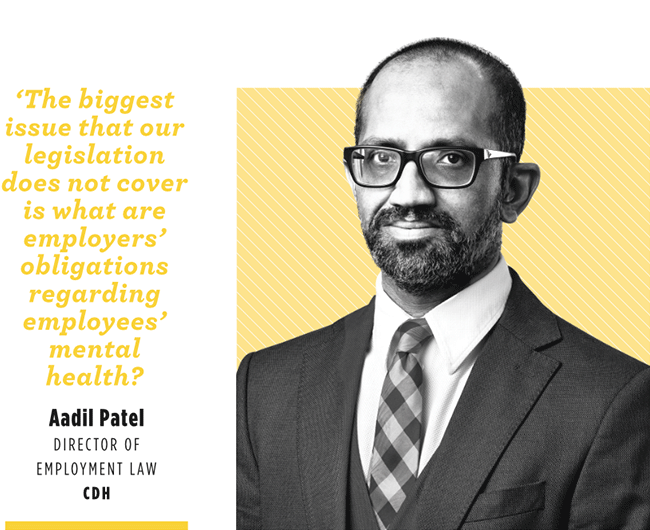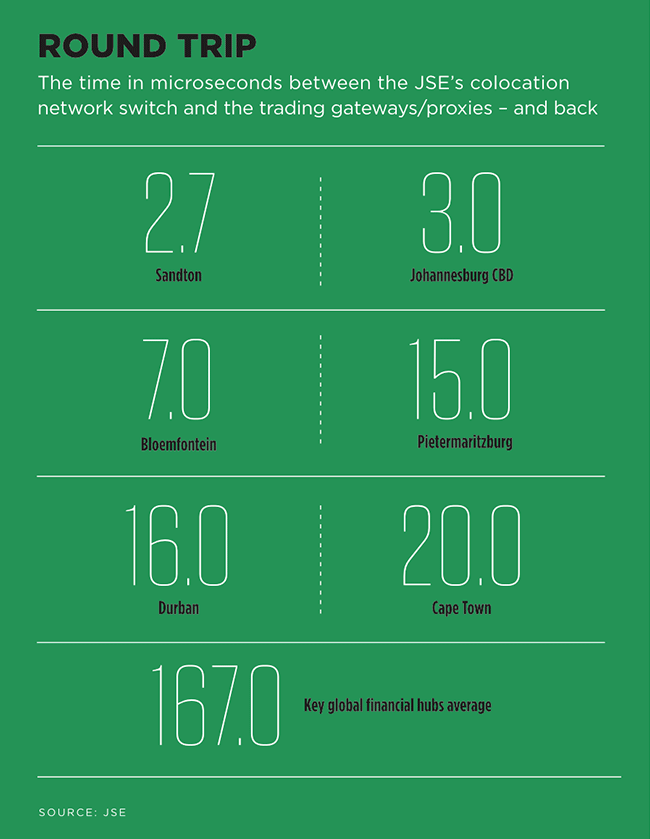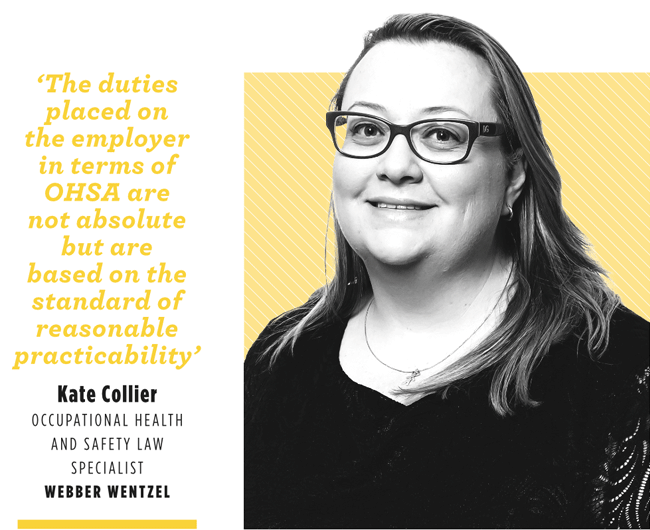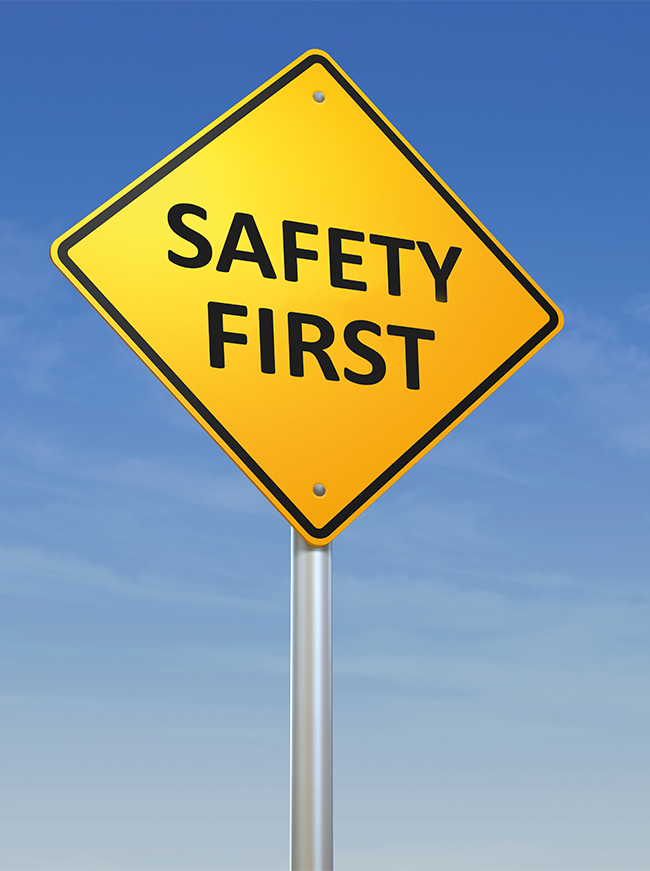With the lifting of the National State of Disaster (NSoD) in April, South Africans – and SA businesses – heaved a collective sigh of relief. While returning to business-as-usual was certainly off the cards due to an expectation most employees have of retaining at least some aspects of the flexible work arrangements established during the NSoD, it became much easier for businesses to begin to rebuild and return to a more satisfactory ‘new normal’.
Many, however, will be wondering what the new normal entails from an occupational health perspective. What are employers’ obligations towards the health of their employees now? Are there any new requirements or legislation to be aware of? In a word, no. Essentially, the Occupational Health and Safety Act (OHSA) – which was in effect before the NSoD – recommences. However, there are new considerations to be aware of.
In order to best comply with the OHSA, companies will need to conduct a new risk assessment (if they haven’t already done so) to determine if any amendments are required to their occupational health policy in light of the COVID-19 pandemic. This is particularly important if companies wish to continue or begin enforcing mandatory vaccination, particularly for new employees.
‘Employers have now had to redo their risk assessments to see whether mandatory vaccination can be justified,’ says Aadil Patel, director of employment law at legal firm Cliffe Dekker Hofmeyer (CDH).
‘Some employers have said yes and some have said no, in many cases because the level of vaccination in South Africa, or in their workplace, is at an acceptable level. On the other hand, some employers have said we still want mandatory vaccination for our employees, and if you’re a new employee, you must show that you have been vaccinated so that we can protect our workers. Because if 90% of your workforce is vaccinated, then a whole bunch of new employees come in unvaccinated, that percentage comes down, and the risk increases.’

Companies are expected to conduct risk assessments annually and keep records thereof. According to the National Institute of Occupational Health, a risk assessment is a careful examination of what could cause harm in the workplace, so that you can decide whether enough precautions have been taken or if more needs to be done to prevent occupational illnesses. ‘You are legally required to assess the health risks in your workplace,’ it states. ‘The important things you need to decide are whether a health hazard is significant, and whether you have it sufficiently covered by precautionary measures so that the risk is small.’
Companies’ decisions with regard to mandatory vaccinations can be advised by the Code of Practice: Managing Exposure to SARS-COV-2 in the Workplace 2022, published by the Minister of Employment and Labour with respect to the Labour Relations Act and which came into effect as soon as the NSoD was lifted. The code contains important stipulations regarding employees’ safety, such as the fact that COVID-19 has been designated as a ‘hazardous biological agent’, and employers have to adhere to certain requirements regarding ventilation, for starters.
An interesting parallel phenomenon has been the increase in cases being brought to the Commission for Conciliation, Mediation and Arbitration (CCMA) by former employees regarding their dismissal during the NSoD.
‘There are now a whole lot of cases at the CCMA where employees were dismissed during the state of disaster,’ says Patel. ‘But the state of disaster has ended, and employers are now having to defend those decisions. People are saying the state of disaster has come to an end, there are no more masks… Why am I still dismissed? Reinstate me.’
CDH has been involved in a least two such cases (for the respondent, the employer). A case was brought against Baroque Medical by a former employee who was retrenched for refusing to comply with the company’s vaccination mandate, and believed she was entitled to severance pay.
In another case, also brought against Baroque Medical by a different applicant, a former employee believed the decision to terminate her employment was unfair, and also sought severance pay. Both cases were dismissed in favour of Baroque Medical, which was found to have acted in the best interests of the safety of its other employees.
‘Employers are saying the dismissals stand, and employees dismissed during the state of disaster may re-apply as a new employees, if the position is still available, and/or if they meet the requirements,’ says Patel.
One new – or at least, newly popular – circumstance business owners may be wondering about is their obligations with regard to employees’ health and safety when working remotely, thanks to the new hybrid working models adopted by many companies.

‘Considering that the OHSA defines a workplace as any premises or place where a person performs work in the course of their employment – including any building, vehicle, vessel or train – the obligation on the employer to provide and maintain, as far as reasonably practicable, a working environment that is safe and without risk to the health of their employees is therefore the same regardless of where the employee is working,’ says Kate Collier, occupational health and safety law specialist at Webber Wentzel.
‘The duties placed on the employer in terms of the OHSA are not absolute but are based on the standard of reasonable practicability. Therefore, while the employer must, in terms of the OHSA, put systems in place that ensure employees perform work safely and without risks to health – including implementing risk assessments, and taking steps to eliminate or mitigate risks – this must be considered in light of reasonable practicability.
‘For instance, where an employee is working from home or remotely, where the employer has little to no control, these steps may take the form of equipping employees with knowledge of the general hazards and risks associated with working from home or remotely; training and awareness of possible hazards and risks that they may be exposed to; how to mitigate or remove such risks; and training on how to use electronic equipment, to name a few.’
There is, however, a focus on the new world of work and the risks associated with working from home or remotely, says Collier. Employers who have made working from home or remote arrangements with employees must consider these risks – such as digital fatigue; the impact that less human interaction has on employees’ mental health; workstation ergonomics and environmental hazards such as illumination, noise, air quality and a host of other considerations – when conducting their risk assessments.
Some amendments to the act have been proposed, but not yet passed and promulgated. ‘The OHS Amendment Bill is expected to be gazetted and signed into legislation in the first half of 2023, and enforces stricter health and safety requirements for South African businesses, including the requirement to develop a health-and-safety management system to formalise workplace health and safety. There are many other proposed amendments, including more severe penalties and the removal of the reasonable practicable standard in some clauses, but none addressing hybrid working.’
Related to this ‘new world of work’, Patel laments the lack of legislation covering workers’ mental health.

‘The biggest issue that our legislation does not cover, and which we are seeing the impact of now, is what are employers’ obligations regarding employees’ mental health? As South Africans, we’re simply not dealing with it,’ he says. ‘Some employers say “we have medical aid and you can go to a therapist”. Or the employers may offer a four-day working week, which could mean that employees have to squeeze the same amount of work into four days, and/or take a commensurate reduction in income.’
Patel adds that in a post-COVID environment, we need to be talking about how we deal with employees’ mental health not only at a corporate level but also at an SME level.
CDH has a hybrid workplace, and there is no compulsory office attendance. ‘We’ve moved offices to a more flexible open-plan arrangement,’ says Patel. ‘We’ve increased our technology assistance. We’ve provided access to more psychological and emotional treatments from various organisations. We have provided people with extra days of leave, at no cost to them. HR has become a fundamentally important role within the organisation; industrial psychologists have become critical in order to identify people who are having challenges. So we have those individuals who engage very purposefully.’
The corporate world needs to start investing, from an occupational-safety perspective, in emotional and psychological well-being, according to Patel. ‘Anecdotally, the suicide rate is high in the corporate world. In the professional-services environment, people are not coping. I am having to become so much more empathetic, telling people to please talk to me if you’ve got too much work so that I can help you. I think we’ll find that companies will start employing more people with lower pay, so that they can lessen individual workloads, which is one solution.’
The question of mental health within the workplace is a burning one, yet one that has no easy answers, particularly when it comes to legislation.
Enforcement of the OHSA is another area that needs to be addressed (inspections show poor compliance by the wholesale and retail sector and the construction industry). Ultimately, companies need to recognise that healthy, safe employees are, after all, good for business.








